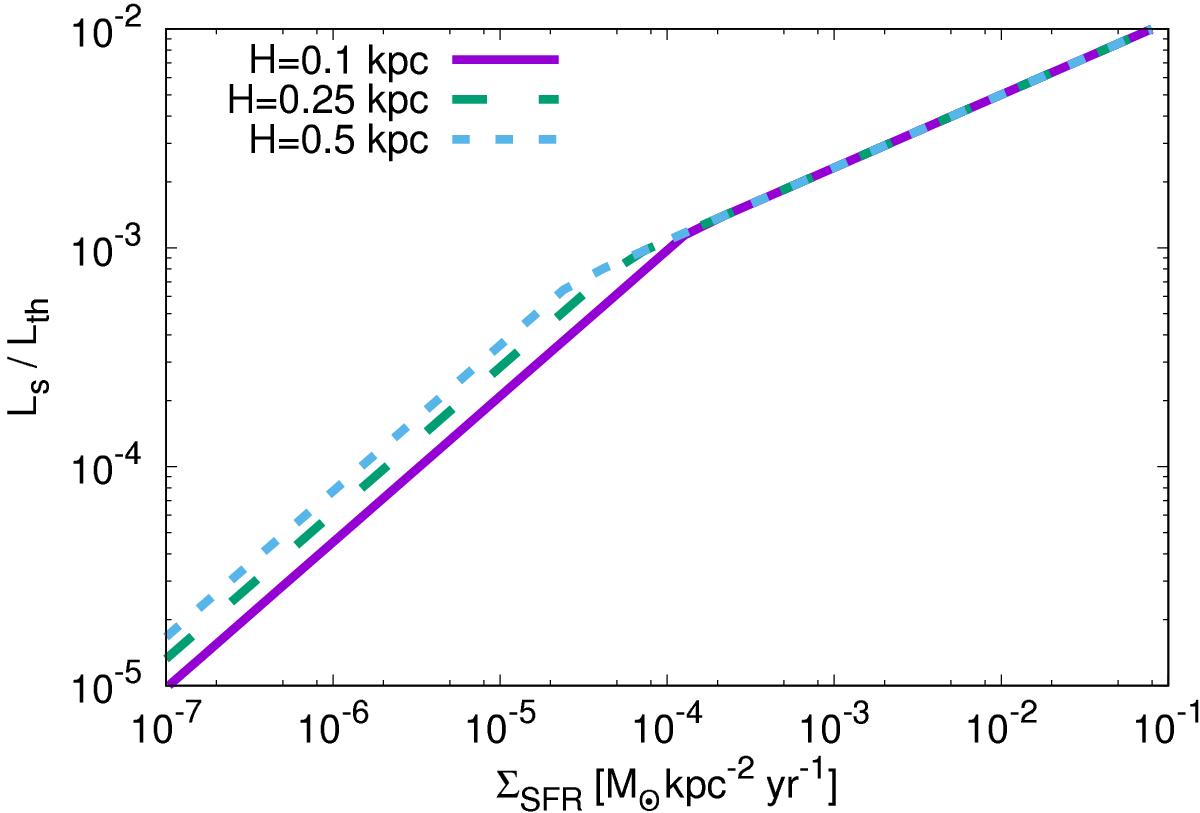Fig. 9

Ratio of the nonthermal radio (~2.64 GHz) to thermal infrared (~60μm) surface brightness, normalized for NGC 4449 adopting the values of Chyży et al. (2011), as a function of the star formation surface density. We assume a size of the star-forming region of 0.5 kpc, and explore values for the disk height of 0.1,0.25,and0.5 kpc, which influence the critical star formation surface density concerning the relevance of cosmic-ray diffusion losses (Eq. (32)). The transition illustrated here is relevant in the regime of slow rotation defined by Eq. (34), where cosmic-ray diffusion effects become relevant before the relation between magnetic field strengths and star formation surface density breaks down.
Current usage metrics show cumulative count of Article Views (full-text article views including HTML views, PDF and ePub downloads, according to the available data) and Abstracts Views on Vision4Press platform.
Data correspond to usage on the plateform after 2015. The current usage metrics is available 48-96 hours after online publication and is updated daily on week days.
Initial download of the metrics may take a while.


